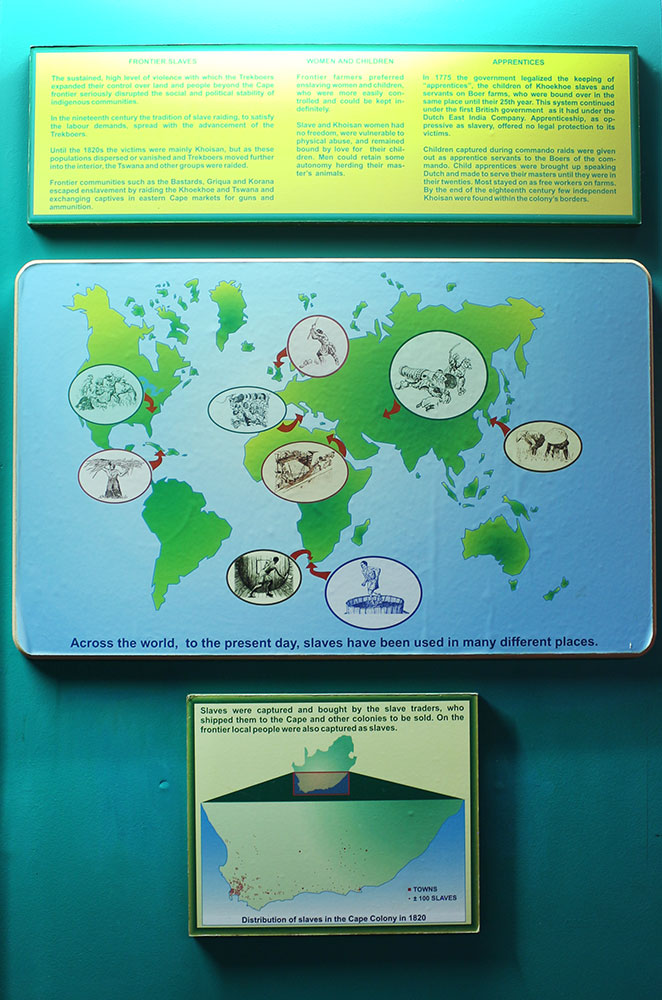The frontier “mix”: Frontier slaves
- The frontier “mix” : Frontier slaves
- https://museumsnc.co.za/new_site/wp-content/uploads/2021/04/frontier-mix-thumb.jpg
- ALL CATEGORIES
- https://museumsnc.co.za/new_site/wp-content/uploads/2021/04/The-frontier-mix-Voiceover.mp3
The sustained high level of violence with which the Trekboers expanded their control over land and people beyond the Cape frontier seriously disrupted the social and political stability of indigenous communities.
In the nineteenth century the tradition of slave raiding, to satisfy labour demands, spread with the advancement of the Trekboers. Until the 1820s the victims were mainly Khoisan, but as these populations dispersed or vanished and Trekboers moved further inland, Tswana and other groups were raided as well. Frontier communities such as the Bastards, Griqua and Korana escaped enslavement by raiding the Khoikhoi and Tswana, and exchanging captives in eastern Cape markets for guns and ammunition.
Frontier farmers preferred enslaving women and children, who were more easily controlled and could be kept indefinitely. Slave and Khoisan women had no freedom, were vulnerable to physical abuse, and remained bound by love for their children. Men could retain some autonomy herding their masters’ animals.
In 1775 the government legalized the keeping of “apprentices”, the children of Khoikhoi slaves and servants on Boer farms, who were bound over in the same place until their 25th year. This system continued under the first British government. Apprenticeship, as oppressive as slavery, offered no legal protection to its victims.
Children captured during commando raids were given out as apprentice servants to the Boers of the commando. Child apprentices were brought up speaking Dutch and were made to serve their masters until they were in their twenties. Most stayed on as free workers on farms. By the end of the eighteenth century few independent Khoisan were found within the colony’s borders.

